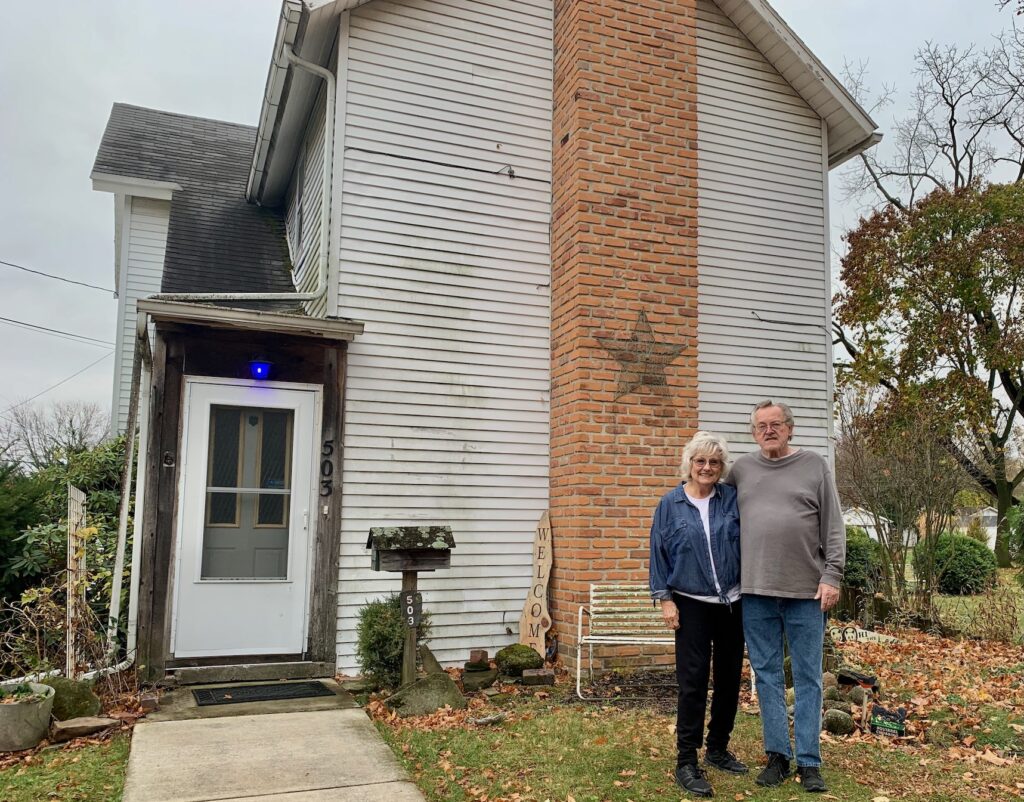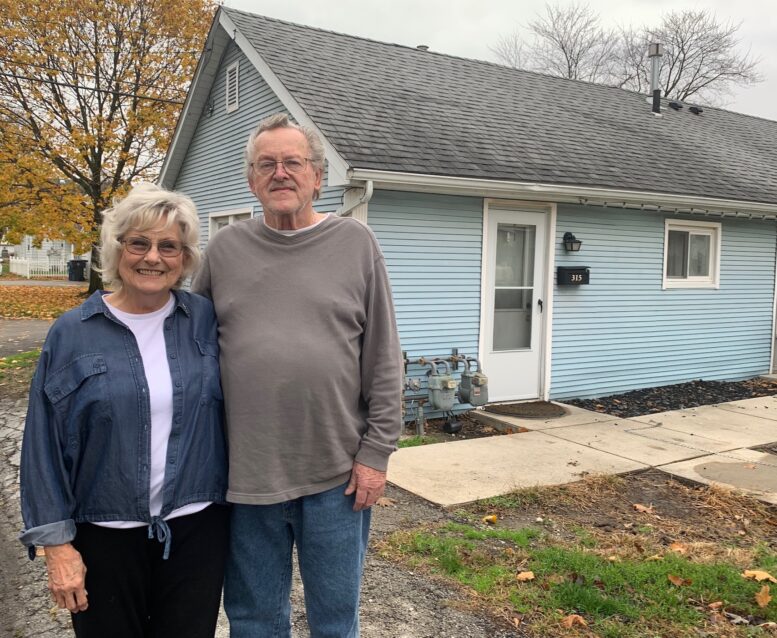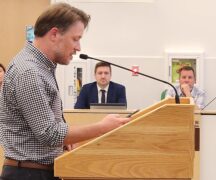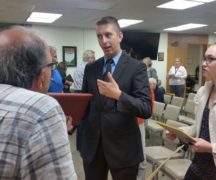By JULIE CARLE
BG Independent News
When it comes to local history, Jean and Charlie Ladd are somewhat experts. Or if not experts, they are at least the keepers of many stories and memorabilia that are worthy of sharing.
The stories come from lived experiences and a vast network that ranges from family members and neighbors to customers and acquaintances. Their connections are remarkable and intertwined with wonderful snippets of Bowling Green and Wood County lore.
Jean grew up in Bowling Green and Charlie in Pemberville. They met after failed marriages, but their love has endured for nearly 50 years through heartaches and happiness, Charlie said.
She is the extravert, who has washed, cut and styled the hair of many Bowling Green women throughout her lifelong career as a hairdresser. In addition to being a hairdresser, Jean is a Master Gardener and a local historian, volunteering at local gardens including Simpson Garden and at her favorite, the Wood County Museum. She knows and loves everyone and is a vocal cheerleader for everything Bowling Green.
He is the introvert, but don’t mistake his quietness for passiveness. When it comes to sharing a story, he is eager to talk about details and historical connections.
Though the interview was to talk about their application for historic preservation status for their home and the original property, we weaved around topics from family connections with Kermit’s (formerly the Wagon Wheel) and recipes/cookbooks to the Hometown Heroes campaign, which honored the military service of Charlie’s father, Robert C. Ladd in Woodville, and Jean’s son, Steven A. King in Bowling Green.
Historic property designation
Their mutual interest in history prompted them to explore the background of their home at 503 Buttonwood Ave., where they have lived for 46 years. A deeper dive into the home’s history led them to seek a historic preservation designation.
According to Wil Roudebush, a Bowling Green Historic Preservation Commission member, a property must meet at least two criteria to be considered for the local historic register.
Of the 11 possible criteria, Roudebush said 503 Buttonwood Ave., which was built in 1888 in a Federal architectural style with a gabled roof, is at least 50 years old; is identified with a person who influenced society–in this case it was Harold Henry Harms, founder of Henry Manufacturing, later Henry Filters; and possesses historical significance as the site of the former Harms Ice Cream factory operated by the Harms family.

When the Ladds moved into the house in 1978, “There was rarely a time when we were outside that somebody didn’t stop by with a story,” Jean recalled. “We just heard story after story.”
Charlie remembered people talking about the hobos that would hop off trains from the nearby railroad tracks that were no longer there.
Before he died in 2012, Don Harms, the ninth of 10 Harms siblings, stopped by and pointed to an upstairs window, telling the Ladds, “I was born in that window 79 years ago.”
There were plenty of stories related to the Harm Ice Cream factory. Recalling their childhoods, people often recounted riding up to the ice cream factory building, east of the house, and getting ice cream.
The youngest son, Eugene Harms, “built an ice box for his bike and would peddle ice cream to the factory workers at their lunchtime,” according to his obituary from Nov. 30, 2023.
“One of Harms’s boys came by and told us the front of house was all built with lumber harvested off of this lot,” Charlie said. “If you want to drill a hole at the front of the house, it is made from rough-cut oak, and it’s like driving a nail into metal.”
They also learned there was also a barn in the back,“probably with the foundation buried, but I’ve never run into it,” he said.
A woman told a story about when she and her sisters sat on the front porch and sang songs with some of the Harms children. The front porch, however, is no longer there.
The Ladds have a file folder filled with records of property owners before they took possession in 1978. In addition to a slate of owners–many of them between family members–the property went through plenty of changes over the years.
Prior to the Ladds’ ownership, there are no specifics of when changes were made, such as the loss of the front porch or the added current kitchen area, pantry and concrete back porch that extended the house to the east.
Since they moved in, they cleared lots of trees and brush, added a driveway and garage, and a side screened-in porch.
Harold Harms’ wife, Bernice, was the last Harms family member to own the home, Charlie said. She sold it in 1973, and at that time, the house and the ice cream building properties were split.
“You could tell it was all one property at one time,” Jean said. To this day, a sidewalk that ran from the factory building to the family house is still there, despite a fence that marked the separation of the properties. The building is now a rental property with two apartments.
While the house has been renovated numerous times and the property split, the historic significance also relies on the fact that Harold Henry Harms and his wife raised their family in the Buttonwood house. “It’s hard to believe a family with 10 kids lived in the house,” Jean said.
He was a well-known businessman, surviving through the Depression and later founding Henry Manufacturing in a small garage in 1952. The company outgrew the garage and moved to a Reed Street location before moving to its current location on Van Camp Road. The company name changed from Henry Manufacturing to Henry Filters and it gained a national reputation for filters and customer service. Today, the Bowling Green plant is a subsidiary of Barnes International Inc., of Rockford, Illinois.
At the Nov. 6 Bowling Green Planning Commission meeting, members recommended city council approve the property be designated a historic property on the Local Historic Register. City Council will have a second reading of the legislation on Monday (Dec. 2).
The Ladds look forward to the property being designated a historic property. “I wanted people to know about the house,” Jean said in her effort to be remembered as an historian.
When they moved into the house with their children, “We were the only ones on block with little kids. Now we are the old ones and everyone else has kids,” he said. “A lot happens in 46 years.”
Regardless of the changes Jean said, “I love this house, and I don’t plan to go anywhere else.”





